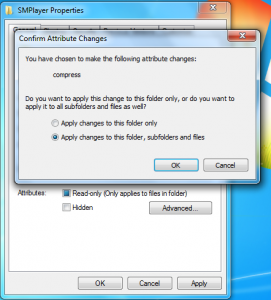How to Enable File or Folder Level Compression in Windows 7?
Many people think think that only third-party applications such as Winzip or Winrar are capable of compressing files or folders. But the fact is Windows 7 provides a built-in feature using which files folders or even whole drives can be compressed up to 17%-20% depending upon the file types. This compression method can be applied on all types of files folders or drives. However compression on one side can reduce the size of files or folders hence eating up less hard disk space on the other hand it may slow down the process of opening files or folders when a user tries to open them. This delay is negligible though.
In order to compress a folder you can follow the below step-by-step instructions:
- Right-click on the drive folder or file that you want to compress and from the context menu select "Properties".
- In the "Properties" box ensure that you are on "General" tab.
- Click on "Advanced" button.
- On the "Advanced Attributes" box check on "Compress contents to save disk space" check box and click on "Ok" button to accept and confirm your selection.
- On the "Properties" box click on "Apply" button.
- On the "Confirm Attribute Changes" box select desired option and click on "Ok" button to confirm.

- When you see the text color of file or folder is changed to blue this means that the compression on that folder has been enabled and now the folder is consuming less disk space. You can test this by going to the properties of compressed folder and noticing the folder size. There will be 2 different sizes mentioned for the same folder. "Size: xx.xx MB" which means the actual size of the folder and "Size on disk: xx.xx MB" means the space the folder is consuming after compression.
More Info:
When you try to access any compressed file or folder Windows 7 decompresses it and then opens it for you. Because of this the process of accessing a compressed file or folder is delayed by few microseconds which of course is negligible. Also when you close file or folder after you are finished with your work Windows 7 re-compresses it in the background.
System Requirements:
Make sure the drive on which you want to enable compression is formatted with NTFS file system. However in almost all cases Windows 7 formats all its drives using NTFS file system only.